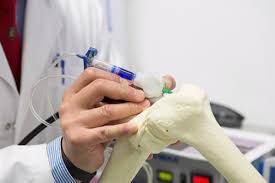
Breaking News
 California in Chaos Today! Atmospheric River Triggers Severe Flooding in Wrightwood
California in Chaos Today! Atmospheric River Triggers Severe Flooding in Wrightwood
 THIS Is The Fastest Way To Get Dementia...The 6 Science-Backed Brain Fixes!
THIS Is The Fastest Way To Get Dementia...The 6 Science-Backed Brain Fixes!
 2026 Will be the Year of Your Greatest Dreams or Worst Fears
2026 Will be the Year of Your Greatest Dreams or Worst Fears
 Joe Rogan Experience #2431 - Shane Gillis
Joe Rogan Experience #2431 - Shane Gillis
Top Tech News
 EngineAI T800: Born to Disrupt! #EngineAI #robotics #newtechnology #newproduct
EngineAI T800: Born to Disrupt! #EngineAI #robotics #newtechnology #newproduct
 This Silicon Anode Breakthrough Could Mark A Turning Point For EV Batteries [Update]
This Silicon Anode Breakthrough Could Mark A Turning Point For EV Batteries [Update]
 Travel gadget promises to dry and iron your clothes – totally hands-free
Travel gadget promises to dry and iron your clothes – totally hands-free
 Perfect Aircrete, Kitchen Ingredients.
Perfect Aircrete, Kitchen Ingredients.
 Futuristic pixel-raising display lets you feel what's onscreen
Futuristic pixel-raising display lets you feel what's onscreen
 Cutting-Edge Facility Generates Pure Water and Hydrogen Fuel from Seawater for Mere Pennies
Cutting-Edge Facility Generates Pure Water and Hydrogen Fuel from Seawater for Mere Pennies
 This tiny dev board is packed with features for ambitious makers
This tiny dev board is packed with features for ambitious makers
 Scientists Discover Gel to Regrow Tooth Enamel
Scientists Discover Gel to Regrow Tooth Enamel
 Vitamin C and Dandelion Root Killing Cancer Cells -- as Former CDC Director Calls for COVID-19...
Vitamin C and Dandelion Root Killing Cancer Cells -- as Former CDC Director Calls for COVID-19...
 Galactic Brain: US firm plans space-based data centers, power grid to challenge China
Galactic Brain: US firm plans space-based data centers, power grid to challenge China
Handheld 3D printer used to grow replacement muscle tissue

We've actually been hearing a lot about "bioscaffolds" lately.
In a nutshell, they're three-dimensional pieces of biocompatible material that are implanted within the body, and that have a microstructure similar to that of the surrounding tissue. Over time, cells from that tissue migrate into the scaffold, colonizing it and reproducing. Eventually, they entirely replace the material, forming pure muscle, bone, cartilage or other tissue.
That said, pre-producing such bioscaffolds and then implanting them in muscle is quite challenging. With that in mind, scientists at the University of Connecticut developed a prototype handheld 3D printer to do the job.
It starts by depositing a gelatin-based hydrogel directly into the unwanted gap within the muscle. An integrated ultraviolet light causes that gel to cure into a bioscaffold made up of tiny muscle-like fibers, which readily adheres to the adjacent muscle tissue – no sutures are required. Muscle cells then move into the scaffolding.
In lab tests, the device proved to be effective at treating volumetric muscle loss injuries in mice.



